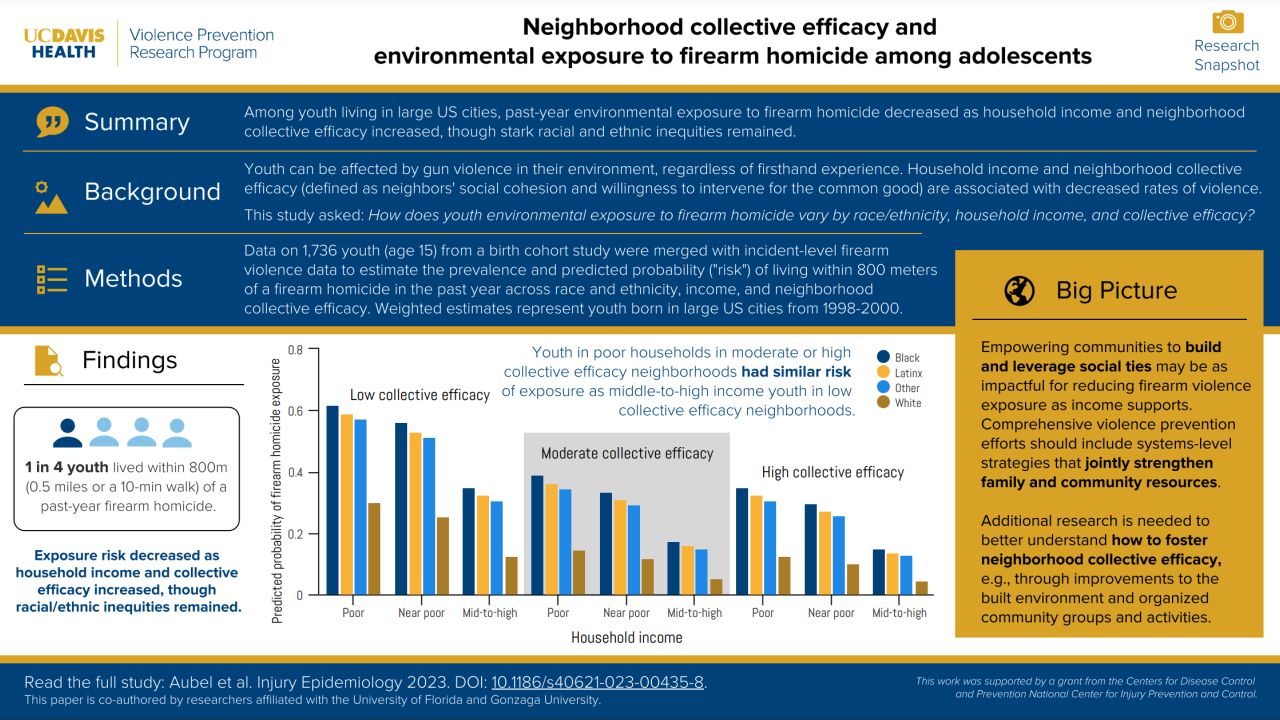
Neighborhood collective efficacy and environmental exposure to firearm homicide among a national sample of adolescents
Quick Summary
- Environmental exposure to firearm violence is common and unequally distributed among adolescents in the USA, reflecting the concentration of structural disadvantage in minoritized communities.
Abstract
Background
Living near an incident of firearm violence can negatively impact youth, regardless of whether the violence is experienced firsthand. Inequities in household and neighborhood resources may affect the prevalence and consequences of exposure across racial/ethnic groups.
Findings
Using data from the Future of Families and Child Wellbeing Study and the Gun Violence Archive, we estimate that approximately 1 in 4 adolescents in large US cities lived within 800 m (0.5 miles) of a past-year firearm homicide during 2014–17. Exposure risk decreased as household income and neighborhood collective efficacy increased, though stark racial/ethnic inequities remained. Across racial/ethnic groups, adolescents in poor households in moderate or high collective efficacy neighborhoods had a similar risk of past-year firearm homicide exposure as middle-to-high income adolescents in low collective efficacy neighborhoods.
Conclusions
Empowering communities to build and leverage social ties may be as impactful for reducing firearm violence exposure as income supports. Comprehensive violence prevention efforts should include systems-level strategies that jointly strengthen family and community resources.
Media Resources
- Read the study in Injury Epidemiology
- View the visual abstract
